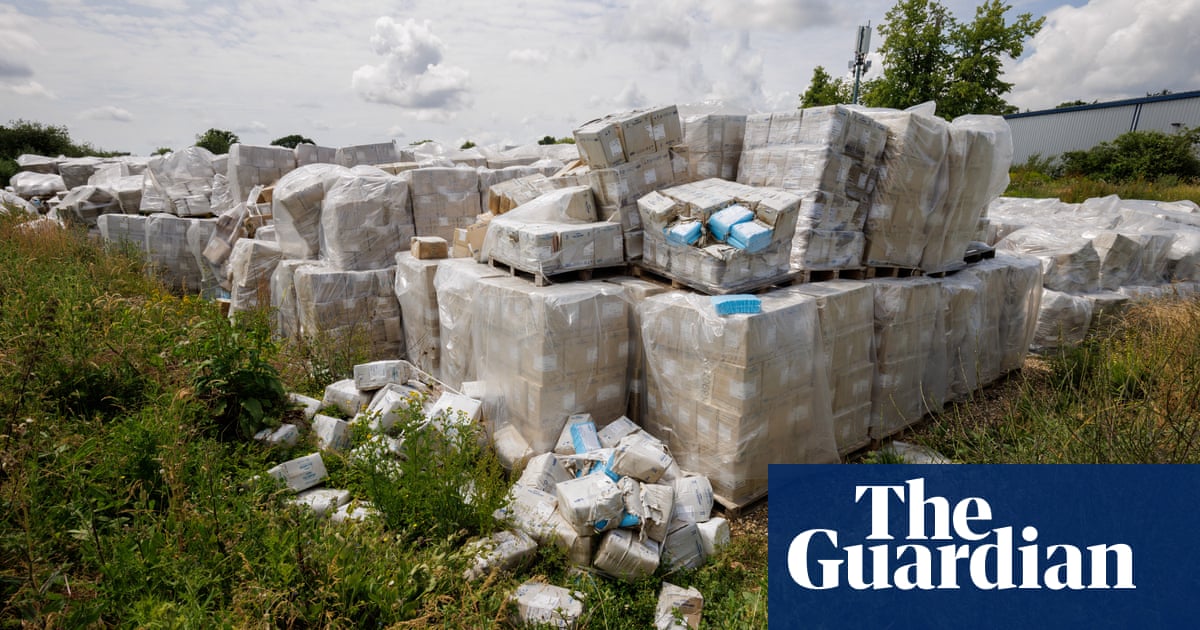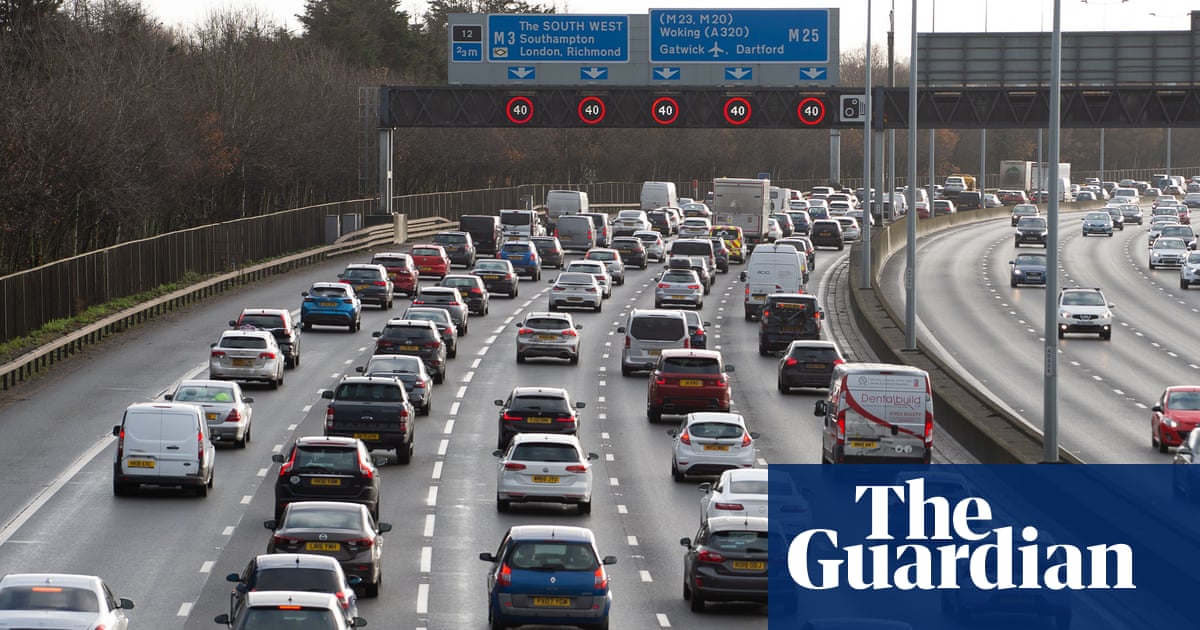
Animal rescue centres received a glut of calls, birds fell out of the sky and nature reserves burned as British wildlife baked in last week’s heatwave.
Conservationists said animals were eerily still as they tried to shelter from the heat. Experts fear that record-breaking temperatures could cause a further collapse in insect numbers, with bumblebees and butterflies among those most affected.
Dehydrated hedgehogs, baby birds, fox cubs and grass snakes were some of the casualties helped by the RSPCA, which warned that the extent of the damage from heat stress in the 40C (104F) conditions was vast. “Our emergency call centre has many more calls than usual. On Monday we received 7,186 calls to our helpline compared to 4,416 on Sunday, which was a big increase,” said Evie Button, scientific officer in the wildlife department at the RSPCA.
There were reports of swifts falling out of the sky in London, and Oxfordshire Wildlife Rescue near Didcot said it could not take any more animals after the heatwave increased the number of casualties being brought in. “Often you don’t see the impacts of something like this directly because the nature of wildlife is to hide away when they’re sick or injured,” said Button. “It’s often only when they’re in a really bad state that people will see them and call us. So a lot of the impact will be hidden.”
Among the most dramatic events was a wildfire in Norfolk’s Wild Ken Hill reserve, where 33 hectares (82 acres) of thorny scrub went up in flames, with nesting territories of turtle doves, grasshopper warblers and reed warblers destroyed. Reptiles and amphibians would have burned, while most birds would have escaped – apart from those nesting late in the season,experts said. “I saw some birds flying back into the flames. I think the maternal instinct is quite strong,” said project manager Dominic Buscall. “I’m concerned about it happening again this year. It’s incredibly dry, we have no rain forecast this week and it’s only mid-July,” he added.
What is happening in the UK is part of a bigger picture, with heatwaves becoming more common as the climate crisis escalates. Across Europe in the past few days land was scorched and there were fires in a number of countries including Spain, Greece and France. With heatwaves projected to become 12 times more frequent by 2040 compared to pre-warming levels, animals across the world are changing their behaviour to cope. For example, research shows grizzly bears in Alberta, Canada, look for more closed, shaded vegetation to cope with hotter temperatures while in Greece brown bears are more likely to be active at night. “Heatwave survivors” are those that get through the heat but suffer from invisible costs such as disease and poor growth.
John Spicer, professor of marine zoology at the University of Plymouth, said the Plymouth harbour tidal zone, which is normally busy with hermit crabs foraging for food and shells at low tide, went quiet during the heatwave. Those crabs that stayed looked sluggish and some were unresponsive.
“The mobile animals which have stayed in the intertidal zone are eerily still,” said Spicer. The beach hoppers, which recycle beach material, were waiting out the heat rather than recomposing nutrients, and occasionally there was a pocket of a hundred crispy dead ones, he observed.
He added: “If they survive the heat stress, they may be damaged or their ‘energy bills’ may be more directed to maintaining themselves rather than to other equally essential functions such as growth and reproduction. So the cost of living increases – and I don’t need to tell you the effects of such a rise.”
Just outside Plymouth three common seaweed species showed extensive damage from the heat. “The creatures which seem impacted most, and this makes sense, are those that cannot move, that are fixed in place – the barnacles, the mussels, the sponges, the sea anemones,” Spicer said.
There have been reports of rare purple hairstreak butterflies venturing down from the tops of oak trees to ponds to get moisture. Across the UK, there is concern the heatwave will have scorched plants that these insects feed on and killed young caterpillars, which could cause dramatic declines in some species.
Bumblebees will also be badly affected, said Dave Goulson, a professor of biology at the University of Sussex. They are relatively large and have furry coats which are adaptations to living in cool conditions. In 40C heat they would not be able to forage. “They overheat in very warm weather and simply cannot fly – imagine trying to flap your arms 200 times per second while wearing a fur coat,” said Goulson. They usually have some food reserves in their nest, so might be able to survive for a few days, but could die if there are prolonged periods of heat.
For a number of British bumblebees it will be too warm to survive in Britain with 2C of warming. Under the best-case climate scenario, seven common bumblebees are predicted to be unable to live in most of lowland England, said Goulson. Research from 2020 suggested that the expansion or decline of bumblebee species could be driven by their resistance to heat stress.
Generally animals such as reptiles and insects, which are ectotherms, are badly affected because they are unable to control their body heat – it simply matches the temperature of the surrounding environment. Those living in cities which suffer from the heat island effect would be subject to the greatest increases in temperature. “In more natural environments that have a lot of trees, vegetation and water bodies, there will be more cool air and shade,” said Dr Natalie Pilakouta, an ecologist at the University of Aberdeen. Putting out feeders in gardens, water points and water baths will all help wildlife get through a heatwave, she said.
Conservationists should also be thinking about creating landscapes that will withstand heatwaves better, said Mike Morecroft, lead author of the IPCC report Climate Change 2022: Impacts, Adaptation and Vulnerability who also works for Natural England. “Something we are quite interested in is deliberately trying to target some of our conservation efforts in what we call refugia from climate change, so places that are naturally cool, like north-facing slopes or higher altitudes,” he said. “Also places near the coast tend to be a bit cooler – because of that, the sea tends to buffer the fluctuations in air temperature.”
Incorporating more water into landscapes means they are more resilient in hot, dry summers and also store water in the case of large flood events. This will help prevent wildfires and reduce the impacts of drought which often come with such hot weather. Because drought, heat and wildfires have all hit at the same time, it’s hard to disentangle the effects of each of them. “The impacts of this week will only be able to be properly assessed in months and years to come,” said Morecroft.
However, urgently cutting greenhouse gases is the highest priority. Spicer said mitigation and adaptation strategies are well meaning and give us some comfort that we are doing something, but they will not avert the car crash that is coming.
“The speed at which we hit the wall is determined by our output of greenhouse gases. The question is not whether we can avoid the crash but how fast you want to be travelling when we hit the wall,” he said. “Dramatically cut greenhouse gases – that is what we can actually do about it, even if it is painful.”












